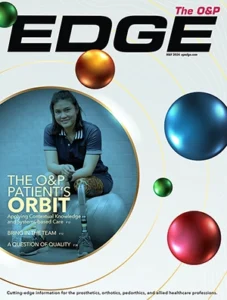Individuals with unilateral transfemoral amputations typically use up to 60 percent more energy than people without a lower-limb amputation, causing fatigue and a 40 percent slower walking speed. These difficulties can hinder mobility and, as a result, quality of life. Research by the University of Salford (Salford), Manchester, England; the University of Manchester, England; and the Endolite Technology Centre, a part of Chas. A. Blatchford & Sons, Hampshire, England, is aimed at enhancing the mobility of people with transfemoral amputations by improving the energy efficiency of prosthetic legs.
The energy storage and return capabilities of prosthetic legs are crucial to improving gait and mobility, but most prostheses only store and return significant energy below the knee and in an uncontrolled way. To overcome these problems, the team of engineers and prosthetists will explore using hydraulic technology to harvest and store energy from the parts of the prosthesis that absorb power, and then return that energy to the propulsive parts. The results will be used to develop new prosthetic leg designs that have increased functionality and require less physical energy expenditures.
The project lead, David Howard, professor at Salford’s School of Computing, Science & Engineering, said, “This is an opportunity for truly transformative research, leading to more biomechanically efficient prosthetic legs, enabling amputees to walk faster for longer and therefore lead more active lives.”
Salford is the only provider of prosthetics and orthotics higher education in England; the program focuses on teaching, research, and enterprise.
Editor’s note: This story was adapted from materials provided by the University of Salford.




